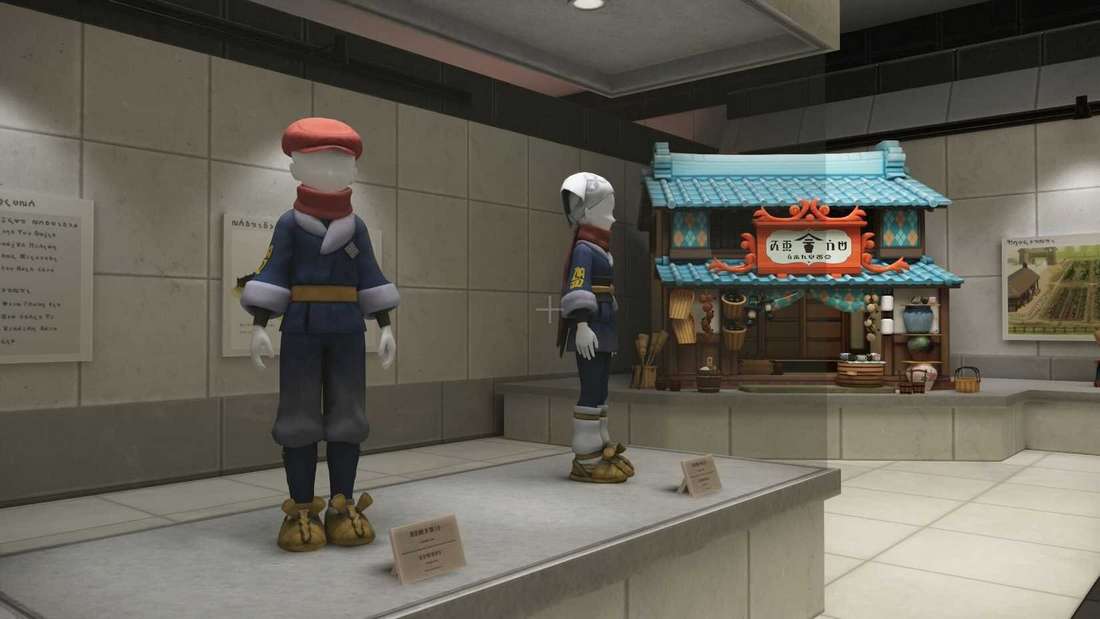Decoding the Pokémon Chronology: Where Does Pokémon Legends: Z-A Fit?
Popular Now
 Rust
Rust
 The Legend of Zelda
The Legend of Zelda
 League of Legends
League of Legends
 Brawl Stars
Brawl Stars
 FIFA 23
FIFA 23
 Sonic the Hedgehog™ Classic
Sonic the Hedgehog™ Classic
 Garena Free Fire: Kalahari
Garena Free Fire: Kalahari
 Gacha Club
Gacha Club
 Stumble Guys
Stumble Guys
 Geometry Dash
Geometry Dash 
The Pokémon franchise is no stranger to complex lore and intertwined narratives, often leaving fans to piece together a convoluted timeline that spans centuries. The announcement and subsequent release of Pokémon Legends: Z-A, set entirely within the metropolitan confines of Lumiose City in the Kalos region, immediately reignited one of the community’s favorite debates: how does this new adventure slot into the existing Pokémon timeline? Early speculation suggested a return to the distant past, echoing the format of the immensely successful Pokémon Legends: Arceus. However, concrete details emerging from reviews and in-game references have now provided a definitive, and perhaps surprising, answer.
Contrary to its predecessor, Pokémon Legends: Z-A does not take place in Kalos’s distant history. Instead, official reports, including a preliminary analysis from sources like IGN, have confirmed that the game is set approximately five years after the events of Pokémon X and Y. This places it firmly in the modern or near-future period of the main series’ continuity, effectively bridging a significant gap and confirming a cohesive “Mega Timeline” where the fan-favorite Mega Evolution mechanic is central.
 The Post-X and Y Kalos: A City in Transition
The Post-X and Y Kalos: A City in Transition
The decision to set Legends: Z-A in the near-future allows for a compelling narrative focus: the “urban redevelopment plan” of Lumiose City. This context is crucial for understanding the game’s timeline placement and its unique gameplay structure. The city is a vibrant, modern hub undergoing a transformative architectural evolution to create “a place that belongs to both people and Pokémon.” This ambitious project, spearheaded by the enigmatic Team MZ and other key figures, could only logically occur after the resolution of the events in Pokémon X and Y, which dealt with a world-threatening crisis involving the Ultimate Weapon.
- Direct Sequel to Kalos Lore: The game acts as a spiritual successor or a long-awaited ‘Pokémon Z’ that never materialized, finally giving closure and depth to the Kalos region’s rich but unfinished narrative threads.
- Technological Consistency: The technology showcased, from the architecture to communication devices, aligns with the advanced state of the Pokémon world as seen in modern titles, not the feudal setting of Hisui (the past Sinnoh region).
- Returning Characters: The presence and updated roles of characters like the immortal King AZ and potentially Professor Sycamore’s likeness in the protagonist’s design strongly suggest a continuity that follows the Kalos saga.
Integrating with the Modern Pokémon Timeline
With Legends: Z-A taking place five years post-Pokémon X and Y, it solidifies its position within the complex “Mega Evolution Timeline” (sometimes referred to as the second main timeline, diverging with the events of Omega Ruby and Alpha Sapphire). Based on the established, albeit fluid, chronology of the games, we can place this new Kalos adventure in relation to other recent generations:
- Set After: Pokémon X and Y (Gen 6) and the events of the Great War that AZ ended.
- Potentially Before or Alongside: The events of Pokémon Sun and Moon / Ultra Sun and Ultra Moon (Gen 7) and Pokémon Sword and Shield (Gen 8). Fan theories and in-game references from the latter games, such as an emote of Galar Champion Leon being described as a “former champion” in the Scarlet and Violet DLC, suggest a tight, modern chronology.
- Prior to: Pokémon Scarlet and Violet (Gen 9), which appears to be the most chronologically recent mainline game due to its numerous cross-regional character appearances and technological leaps.
This positioning is a masterstroke of game design, allowing the development team to simultaneously revisit the popular Mega Evolution mechanic while advancing the overarching story of the Pokémon world in an urban, dense environment. It is a bold move away from the historical setting of Legends: Arceus, yet it maintains the spirit of a focused, transformative journey.
 The Resurgence of Mega Evolution: A Timeline Consequence
The Resurgence of Mega Evolution: A Timeline Consequence
The central theme of Legends: Z-A is the triumphant, strategic return of Mega Evolution. The fact that this powerful transformation is the core gameplay and narrative element further links the game to the Kalos region, where it was originally introduced. The “Mega Dimension DLC,” which focuses heavily on new Mega Evolutions for Pokémon like Greninja, Meganium, Emboar, and Feraligatr, solidifies this as the game that canonizes and expands the mechanic in a modern setting.
The timeline placement suggests that Mega Evolution, after its introduction and initial discovery in X and Y, did not disappear but rather became a fundamental part of competitive and societal structure in Kalos. Lumiose City’s urban redevelopment is likely tied to the safe and integrated use of Mega Energy, providing a high-stakes reason for its return and its central role in the new Z-A Battle Club. This setting offers a high-value proposition for players who missed the mechanic, delivering on a long-standing fan demand.
Final Analysis: A Pivotal Modern Entry
In conclusion, Pokémon Legends: Z-A is a pivotal title that expertly navigates the franchise’s complex chronology. It is definitively a near-future sequel to Pokémon X and Y, taking place roughly five years later. This placement not only reintroduces the strategic depth of Mega Evolution but also reinforces the interconnected nature of the modern Pokémon world. The game doesn’t just fill a gap; it revitalizes an entire region and mechanic, setting the stage for future continuity and cementing the Kalos region’s legacy as the origin of one of the series’ most dynamic features.
The ongoing commitment to creating a consistent and evolving world, from the ancient Hisui to the redeveloped Lumiose, keeps the Pokémon RPG experience fresh, valuable, and strategically deep. Fans eager for high-stakes, competitive gameplay and rich lore will find Pokémon Legends: Z-A to be an indispensable entry in the modern timeline.









 The Post-X and Y Kalos: A City in Transition
The Post-X and Y Kalos: A City in Transition The Resurgence of Mega Evolution: A Timeline Consequence
The Resurgence of Mega Evolution: A Timeline Consequence